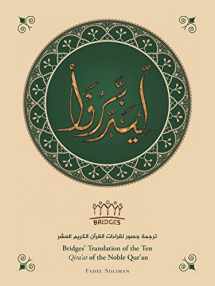
Bridges’ Translation of the Ten Qira’at of the Noble Qur’an (black and white)
Book details
Summary
Description
Bridges' translation aims to help non-Arabic readers in pondering the Qur'an (tadabbor). The translators focused not only on translating what God meant to say, but also on translating how He spoke.
There are three main new features in this translation that make it unique:
1. It is the first translation which includes the ten Qira'at (modes of recitation). The main text is written in accordance with the Qira'a of Asem, narrated by Hafs. Variations from that are presented in footnotes denoted by 'Q'. The translation presents around 30% of the variations of the Qira'at--those which affect the meaning.
2. It is the first translation that takes into consideration the Qur'anic phenomenon of grammatical shifts, whether in verb tenses, numbers, or pronouns. These are a great source of pondering for the reader.
3. To denote whether a pronoun like 'you' or an imperative verb like 'say' is plural, dual, or singular, the translators did not impose their understanding on the reader by adding text between brackets like (O Prophet) to denote singular form, or (O mankind) to denote plural form. Rather, this distinction was achieved by adding a superscript after pronouns and imperative verbs. For example: youpl is used for a plural pronoun, yousg for a singular pronoun, and youdl for a dual pronoun.


We would LOVE it if you could help us and other readers by reviewing the book
Book review



